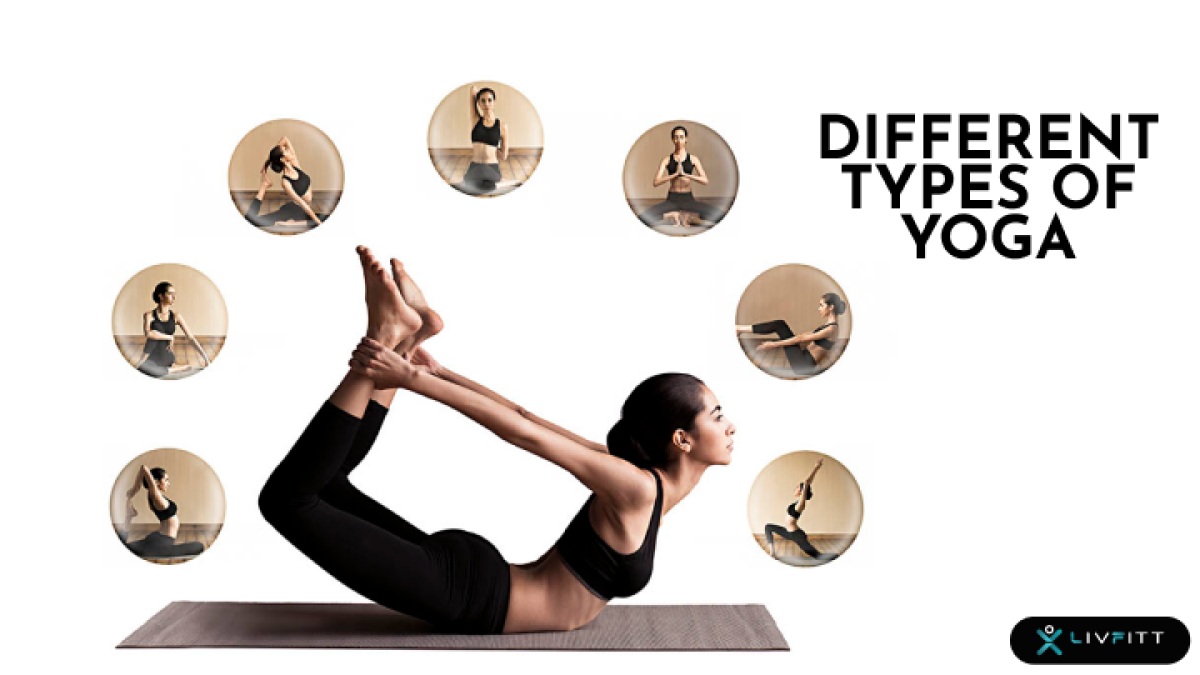
Know about different types of Yoga
The word "Yoga" means "Union." Yoga connects the mind with the body. It has both physical and spiritual benefits. Yoga has been in practice since ancient times in India. It is now widely acknowledged as a tool to live a healthy and balanced life. Yoga, which is practised all over the world, focuses on improving inner well-being and physical health.
We can perform several forms of yoga from the comfort of our own homes and get all of the power-packed advantages. The nice thing about yoga is that you only need a mat and half an hour each day to get started.
Different forms of yoga are being utilized to address physical and mental issues as a therapeutic therapy. If you search online for ‘Therapy, Yoga,' you will discover that there are many forms of yoga for certain health concerns. Yoga for back pain, yoga to lose belly fat, yoga asana for weight reduction, and even yoga for weight growth are all search choices. These are a series of physical postures and breathing exercises that have an influence on your problem regions and help you eliminate them.
There are the following styles of yoga:
Hatha Yoga
Hatha is a Sanskrit word that translates to "power." Hatha yoga helps the body regain balance. This kind of yoga focuses on balancing the chakras and energy centres located in the body. The chakras are energy vortexes or places in our bodies where energy is concentrated. They may be found in seven distinct parts of the body, each of which is linked to certain organs and glands.
Hatha yoga is a system of physical postures and stances that aim to bring the body and mind into harmony. All the forms of yoga that are popularized by various schools and gurus all have one thing in common.
They all help you to destress, stay physically fit and make you look younger as yoga purifies and heals your system from within.
Ashtanga Yoga
The Yoga Sutras of guru Patanjali are the foundation of Ashtanga yoga. The name Ashtanga is derived from the number eight and is known as a weight-loss yoga style. Principles, personal discipline, asana and postures, pranayama, withdrawal, focus, meditation, and salvation are the eight pillars of Ashtanga yoga.
Some of the common different types of asanas practiced ashtanga yoga are:
- Padmasana
- Simhasan
- The Butterfly
- Kapalbhati pranayama
- Anulom vilom pranayama
- Surya bhedi pranayama
- Chandra bhedi pranayama
If you are looking for yoga for anxiety and stress relief, or yoga for upper back pain or lower back pain, or yoga for fat loss, ashtanga would suit you best.
Vinyasa Yoga
This form of yoga is also called “flow” yoga. The word “Vinyasa” can be broken into two, VI means variation, and Nyasa means prescribed limits.
Vinyasa yoga incorporates coordination of movement and breathing techniques. It creates a flow of postures with controlled breathing. This flow also depicts the flow of life. Vinyasa yoga’s flow is initiated by a child’s pose and is terminated by the death pose (the Savasana). The transitions into each posture reflect the movement through an individual’s life as well. Meditation can be incorporated into Vinyasa yoga asanas to make the movements more mindful.
For a beginner in Vinyasa yoga, the ideal sequence should be:
- Plank pose (Kumbhakasana),
- Knees-Chest-Chin Pose (Ashtanga Namaskara),
- Cobra pose (Bhujangasana)
- Downward-Facing Dog poses (Adho Mukha Svanasana).
Vinyasa yoga is an excellent choice for the ones who like high-intensity exercises or workouts. It is ideal to get rid of anxiety, depression, blood pressure and sleep.
Kundalini Yoga
It is also known as the “Yoga of awareness,” Kundalini yoga includes repetitive poses. The sole purpose of kundalini yoga is to awaken your kundalini Shakti. This is the spiritual energy located at the base of the spine of every individual. The kundalini Shakti is considered to be like a coiled snake, unaroused at the base of the spine. The active energy moves up the spine and contributes to your spiritual well-being. Kundalini yoga is also good to fight stress, anxiety, depression and improve cognitive function.
The movements begin with the chant of Om, followed by the pranayama, (the act of controlled and precise breathing). Then comes the Kriya, which is a set of postures or mudras (specific positioning of the hand). It is followed by pranayama, chanting, and meditation.
There are innumerable advantages of practicing Yoga regularly. Yoga changes an individual’s lifestyle completely and gives birth to a new way of life. The terms like yoga glow, yoga abs, yogic calmness have become quite popular over the years. Someone who practices yoga over a period of time actually sees a huge difference in his/her body and the way he/she feels. Some of the common benefits of yoga are as follows:
- Regular practice promotes weight loss
- Improves blood circulation resulting in improved skin
- Delays ageing and is restorative by nature
- Improves physical stamina
- Good for gut health
- Improves fertility and reproductive health
- Improves sleep cycle
- Makes you calm and happy
- Improves concentration
- Reduces stress
- Improves immunity

